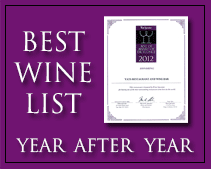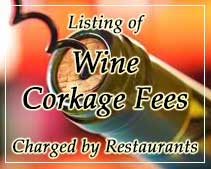Korean foods are definitely different from foods elsewhere in the world
January 20, 2011
Korean foods are definitely different from foods elsewhere in the world. The one attribute which stands out the most is spiciness. The other is that many dishes are served at room temperature (yet some are served boiling hot). Korean food has a distinctive flavor, with the use of various vegetables and spices to complement the meats. Hanjongshik (한정식) literally means “full course Korean meal” which consists of grilled fish, steamed short ribs, and multiple side dishes. The usual Korean meal is rather elaborate when served in a restaurant even if defined only by the quantity offered.
The staple of the Korean diet is kimchi (김치). It has become, through tradition and enduring style, almost a religious activity to prepare. Kimjang (김장), which occurs in the autumn harvest season, is the most important annual social event of Korea, at which time the dish is prepared in great quantities. The ingredients are trucked in in huge piles. The women gather in groups to spend hours cutting, washing and salting the cabbage and white radishes. Then they are rubbed with red pepper, then garlicked and pickled. The concoction is then buried in huge earthenware crocks to keep it fresh yet fermenting though the winter months. By the time the moment arrives for people to feast upon the final product, it is fiery hot. Some kimchi is milder, such as a light brine kimchi, usually prepared in the summer months when it is difficult to retain its freshness. There is also a type of light kimchi soup – fermented water with vegetables which is usually served aside a variety of other side dishes.
Numerous meat dishes are available. The most popular of these is pulgogi (불고기), or “fire beef,” which is thinly sliced marinated beef, marinated ribs, unmarinated sliced beef or unmarinated sliced pork. Some call it barbecued beef, and is appreciated by many Western people. It is broiled in a convex slotted brazier with a catcher for collecting the rich juices which can be made into a delicious soup after the meal. Kalbi (갈비), steamed or broiled marinated beef or pork short ribs, is also quite popular, and is more tender than pulgogi. Shinsillo is a delicious mixture of meat, fish, vegetables and bean curd. It is served simmered in a beef broth over a charcoal broiler with a small chimney. It is also sometimes served with eggs and gingko nuts.
Pibimbap (비빔밥) is made from cooked rice mixed with bits of meat, seasoned vegetables, and egg. It is sometimes prepared with koch’ujang (고추장), a red pepper sauce. Genghis Khan is made from thin slices of beef cooked in a broth mixed with vegetables, herbs, and spices. Broiled to-mi (도미) is red snapper served with sweet and sour vegetables. Other popular dishes are takmokam, stewed chicken; sojum kui, beef pieces barbecued on an iron-hot plate then dipped in salt and pepper; and kimpap (김밥), chopped meat and vegetables wrapped in rice and dried seaweed, usually served with a bowl of soup and pickled radishes.
Vegetable dishes are also very popular in Korea. In fact, rice is meant to be the main course of a meal, and the additional foods are intended to enhance its flavor. Naengmyon (냉면) is a single, independent dish of cold noodles, and jajangmyon (짜장면, 자장면) is noodles with black sauce. Mandu (만두) is steamed dumplings.
Soups (국) in Korea vary in taste and potency. Maeuntang (매운탕) is a spicy, hot seafood soup that usually includes white fish, vegetables, soybean curd, red pepper powder, and a poached egg. Twoenjang-guk (된장국) is a fermented soybean paste soup with shortnecked clams in its broth. Miyok-guk (미역국) is a vegetable soup prepared with dried spinach, sliced radish, or dried seaweed. Also popular is a light broth boiled from highly seasoned dried anchovies.
The herbs and spices which give Korean meals such a delicious flavor also carry medicinal properties. Mugworts, aralia shoots, sowthistle, and shepherd’s purse are eaten in the meal to help cool or warm the head and body. Additionally, kimchi is a valuable source of vitamin C.
Korean food, whether a spicy hot kimchi or a mild dish of cold naengmyon, is characteristic of Korean tradition. The serving style of multiple side dishes and at-your-table cooking creates a warm, homely feel. The long and thorough preparation makes the taste completely fill a dish, through the broth cooking and fermentation. Korean food is in a class by itself.
Source: http://www.zkorean.com/about_korea/korean_food_part_3
Clark Wine Center was built in 2003 by Hong Kong-based Yats International Leisure Philippines to become the largest wine shop in Philippines supplying Asia’s wine lovers with fine vintage wines at attractive prices. Today, this wine shop in Clark Philippines offers over 2000 selections of fine wines from all major wine regions in the world. As a leading wine supplier in Philippines, Pampanga’s Clark Wine Center offers an incomparable breadth of vintages, wines from back vintages spanning over 50 years. Clark Wine Center is located in Pampanga Clark Freeport Zone adjacent to Angeles City, just 25 minutes from Subic and 45 minutes from Manila.
Wines from Burgundy, Bordeaux, Rhone, Loire, Spain, Portugal, Germany, Austria, Alsace, USA, Australia, New Zealand, Italy, South Africa, Chile and Argentina etc. are well represented in this Clark Wine Shop.
http://www.ClarkWineCenter.com
Getting to this wine shop in Pampanga Angeles City Clark Freeport Zone Philippines from Manila
Getting to the Clark Wine Center wine shop from Manila is quite simple: after entering Clark Freeport from Dau and Angeles City, proceed straight along the main highway M A Roxas. Clark Wine Center is the stand-along white building on the right, at the corner A Bonifacio Ave. From the Clark International Airport DMIA, ask the taxi to drive towards the entrance of Clark going to Angeles City. From Mimosa, just proceed towards the exit of Clark and this wine shop is on the opposite side of the main road M A Roxas.
For inquires and reservations, contact us here
Clark Wine Center
Bldg 6460 Clark Observatory Building
Manuel A. Roxas Highway corner A Bonifacio Ave,
Angeles Clark Freeport Zone, Pampanga 2023
0922-870-5173 0917-826-8790 (ask for Ana Fe)
Wine@Yats-International.com
YATS Wine Cellars
Manila Sales Office
3003C East Tower, Phil Stock Exchange Center,
Exchange Rd Ortigas Metro Manila, Philippines 1605
(632) 637-5019 0917-520-4393 ask for Rea or Chay
Best place to buy wine in Clark Pampanga outside Manila near Subic and Angeles City Philippines is Clark Wine Center.
You can skip to the end and leave a response. Pinging is currently not allowed.







